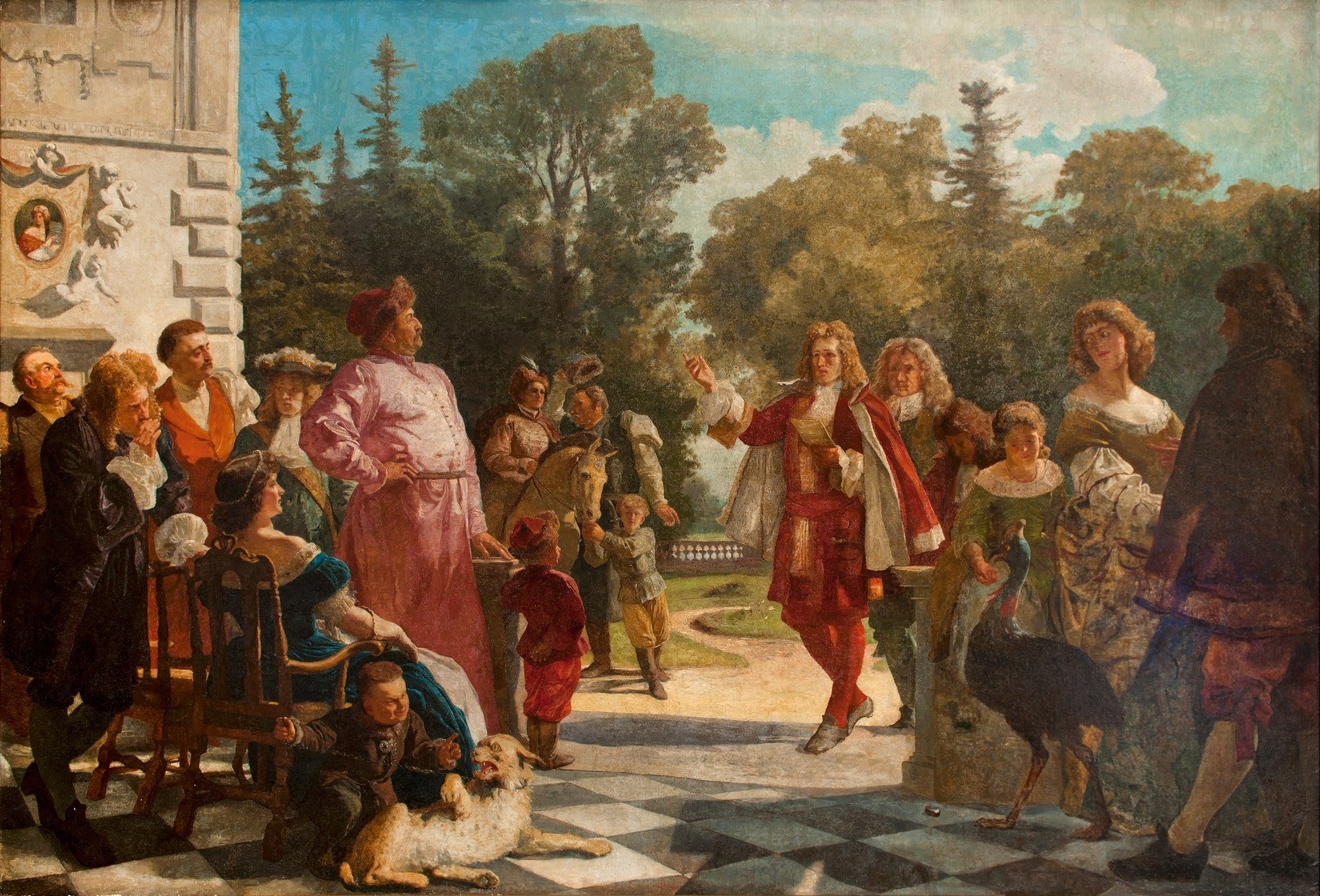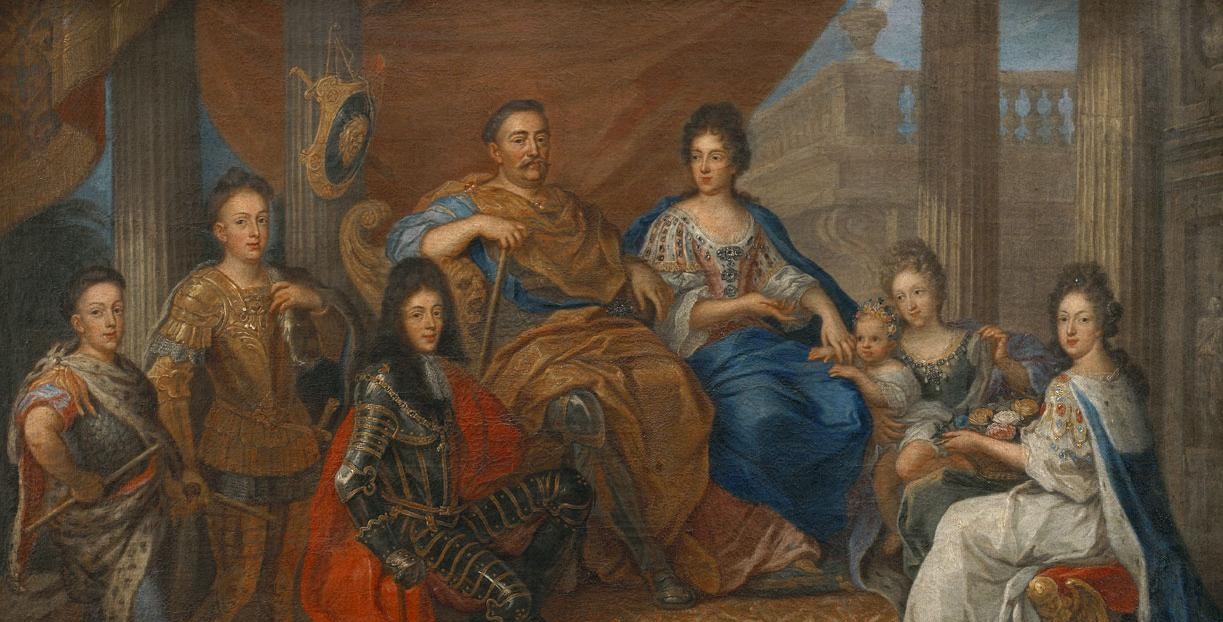Appropriate behavior is required during various social and business meetings and those who lack good manners are perceived negatively. It was similar in old Polish times when it was believed that everyone should have proper manners. The expectation was thatpolan everyone should be treated with respect and courtesy, although each party must always bear in mind their own dignity and honor. Here are the most important principles of old Polish etiquette.
by Anna Wójciuk
In the old Polish times, aristocratic modes of etiquette dominated and were eagerly adopted by the lower social classes. There were several reasons for the exaltation of the nobility by old Polish society. First of all, the nobleman was considered an honorable, courageous, respectful, loyal, hard-working, dignified and religious man. In addition, the most important noble values included, among others, family, peace at home, the cult of rural life, and health. These features impressed the other social strata, which is why the nobility was [so widely] imitated.
The noble understanding of a brotherly bond was also admired. The nobility always emphasized equality and brotherly bonds with other members of their estate. Adopting this feature meant that one of the most important values of old Polish society was solidarity among those belonging to the same social status: a peasant, seeing the misfortune of another peasant caused by disease or poor harvest, would set out to help.
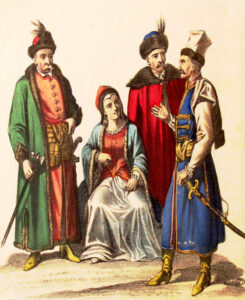
The nobility and the peasants had more in common than one might think. The nobleman owned the farmland on which the peasants worked. The nobility lived in the villages, as the city, according to them, was the seat of evil, immoral acts and omnipresent lies. The village, on the other hand, made it possible to lead a peaceful life. The almost daily contacts of both social classes resulted in the formation of certain common features, namely: hospitality, a sense of dignity, ambition, honor, individualism, and fantasy.
This aristocratic system of etiquette contributed to the formation of the national code, which became the foundation of social unity and strengthened interstate and interregional ties. The code included four principles, according to which it was necessary to: a) treat the interlocutor kindly, b) demonstrate social solidarity, c) increase the value of the conversation partner, and d) show special respect to women, the elderly and representatives of the authorities. Let’s take a look at the most important and common principles of the national code of courtesy.
It is worth starting with the basic polite forms that were used on a daily basis, i.e. titular phrases. Each state had a different title, i.e. a magnate was a “great” man, a nobleman was called “noble,” a burgher was called “honest,” and a peasant was nicknamed “hardworking.” The titles did not end there, these titular phrases were extensive. There were many different formulas, the use of which depended on the estate to which one belonged. Everyone had to follow the rules in force. Any deviations were perceived as a sign of rudeness or an attempt to provoke.
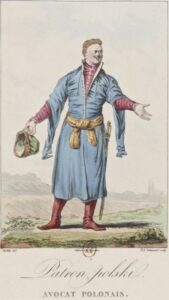
Titles were divided into three strata. The first are fraternal titles used by the nobility. They expressed equality of the state and emphasized noble solidarity. The most important polite expression was “sir, brother” to which there were certain rules. The nobility had to obligatorily use this phrase in the case of social equality. No noble could either omit it or replace it with another title. Moreover, it was unacceptable to call another nobleman a “friend.” This would offend the interlocutor. A nobleman could use the title “friend” towards people belonging to a lower social strata, for example a burgher or a merchant.
The word “friend” applied to a spouse had a completely different meaning. As a result of social changes, husbands exercised less and less social domination over women. The wife enjoyed respect and influenced the decisions and behavior of the spouse in the family. Referred to by her husband as a “precious jewel,” and “equal companion,” she became the most precious treasure and irreplaceable friend. In short, a wife who was a “friend” gained high status in the family, became her husband’s companion, and was a confidant of his secrets and personal affairs.
The next are the royal titles, which were valid during conversation with the king. The main phrase was the form of “your love,” others which were acceptable were: “your love, sir,” “merciful lord,” etc.
The last group of titles were official titles with numerous descriptions. The function of official titles was self-esteem. Therefore, in order to be considered a well-mannered man who knew the rules of politeness, it was necessary to remember every title, even the most modest, and official one.
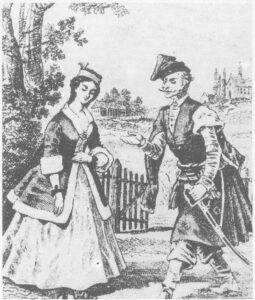
Another common act of courtesy was the greeting. The religious nobility and peasants greeted others with the words: “God helps” or “Praised be Jesus Christ.” Lay people, in turn, greeted each other with the phrases: “hello,” “cheerio, brother,” “service,” and “good morning.”
Each greeting was accompanied by an appropriate gesture. One of them was to lift the headgear or take it off. While tipping one’s hat was a natural sign of respect, removing it was an expression of special respect or social or age-based subservience.
Another polite greeting gesture was a bow. This was the way a man most often greeted a woman, and it was a humble bow. Children who greeted their parents with a bow displayed a special symbolism. When greeting their parents, people would bow low with their left hand over their heart. The son would bend one knee, and the daughter both. It was a low and humble bow that most profoundly honored parents.
Clergymen who had a high social position were greeted with great respect and humility. The habit and cassock worn by the clergy aroused respect. Moreover, old Polish society showed great piety. The Christian faith was one of its most important values. Most of the clergy would receive a kiss on the hand.

A kiss on the hand was a common polite gesture and offered to elders in the family and those with a higher social status. In magnate families, servants had to kiss the hands of little boys, it was always necessary to kiss the royal hand, and men greeted women with a kiss on the hand. A woman giving a hand to kiss, had to take off her gloves. Shaking hands with a barrier between was a sign of contempt, and even an insult.
After saying the welcome phrase and making the appropriate gesture, it was necessary to say a few compliments or ask the other party about their health. In this way, respect was shown and interest in the other person was emphasized.
The presentation of gifts was also an expression of respect and courtesy. Mutual giving was an old Polish duty. Gifts were given on various occasions, such as the birth of a child, a wedding, birthday, name day, holidays, visits from a friend close to the heart, recognition for merits, etc. These gifts played an important role. They were a proof of sentiment, friendship and devotion. The value of the gifts depended on the occasion, the guest-host relationship, state affiliation, wealth, and the generosity of the giver. The wealthiest ones gave expensive gifts, such as: horses, hunting dogs, weapons, expensive items for decorating the manor, furs, jewels, jewelry, snuff boxes, and watches, etc. Less wealthy states gave such things as jewelry, silver utensils, and cloth. The gifts of the poorest consisted of small sums of money or home-grown agricultural goods.
In accordance with the national code of courtesy, the recipient also presented a gift. Most often it was an item in their house that the guest liked. It could be any item, such as a saber, shotgun, casket, mug. Sometimes an animal would be gifted, such as a hunting dog or a horse. The guest could not refuse the gift. The refusal was perceived as an insult and even contempt for the friendship.
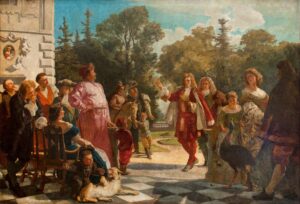
Each person arriving with a gift had to be properly accommodated. It was the duty of the host to greet guests at the door of the house. The greeting was accompanied by compliments. Then, according to the national code of courtesy, the guest entered first. The guest priority rule was very important, and could not be forgotten. After welcoming courtesies, the host invited people to a feast that often lasted many hours. It was necessary to accommodate the guests in the best possible way. The host with his wife and other household members prepared a variety of dishes and provided entertainment. At the end, guests were reluctantly allowed to depart. Various ways were invented to stop them. One original idea was to remove and hide the wheels from the carriages on which the revelers arrived. The guests, deprived of a means of transport, had to stay overnight.
When concluding reflections on traditions of Polish politeness, it is worth paying attention to the understanding of the word “polite” in old Poland. This term had a different meaning than today, it meant: common sense, tact, purposefulness of words and deeds, and behavior towards/to things. In old Polish times, a person who obeyed the national code of courtesy was called “human,” i.e. one who has all social advantages, such as courtesy, elegance, kindness, respect for others, cheerfulness, hospitality, brotherhood, nobility, helpfulness, sensitivity and compassion.
Author: Dr Anna Wójciuk
Translation: Alicja Rose & Jessica Sirotin

